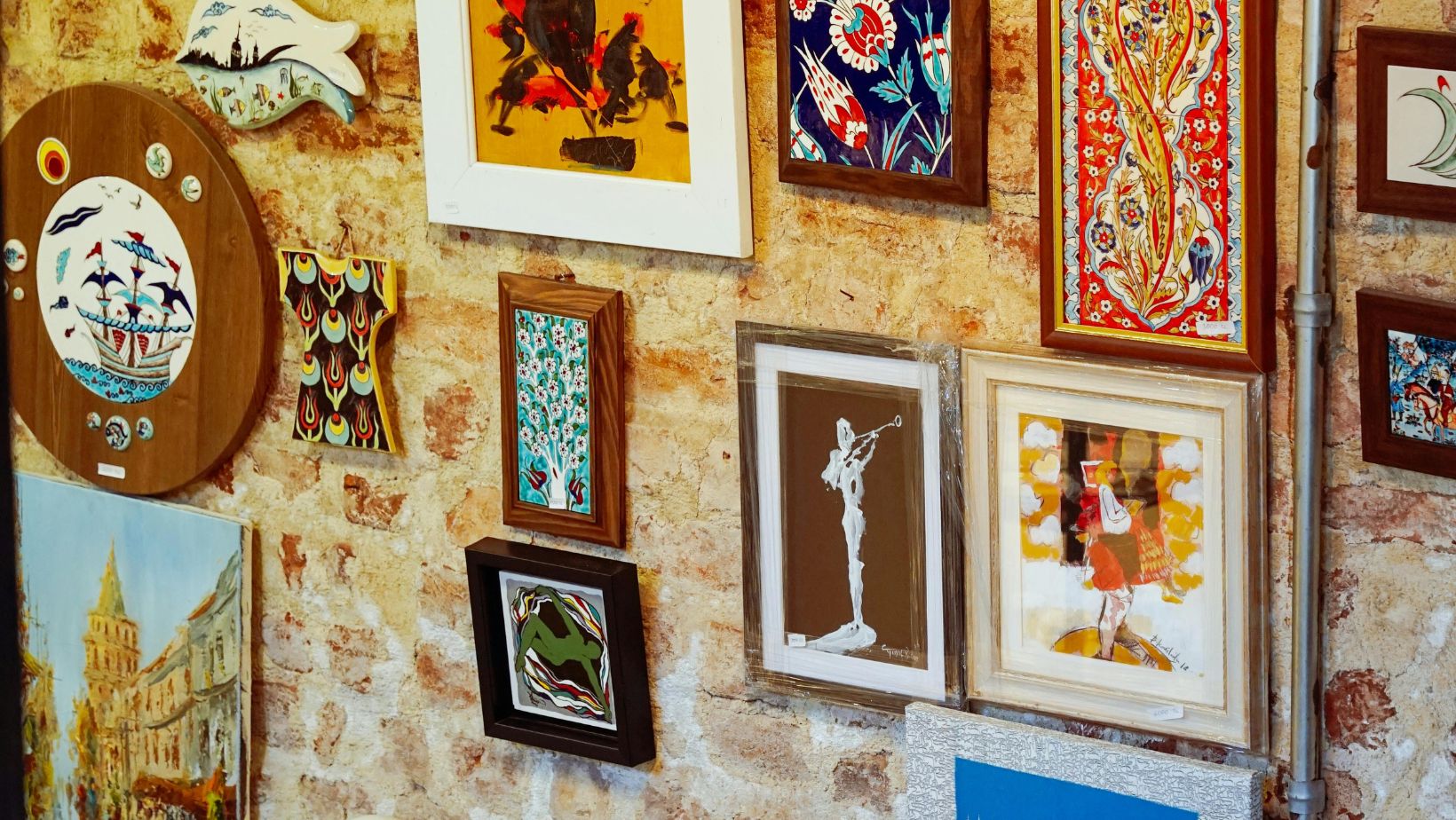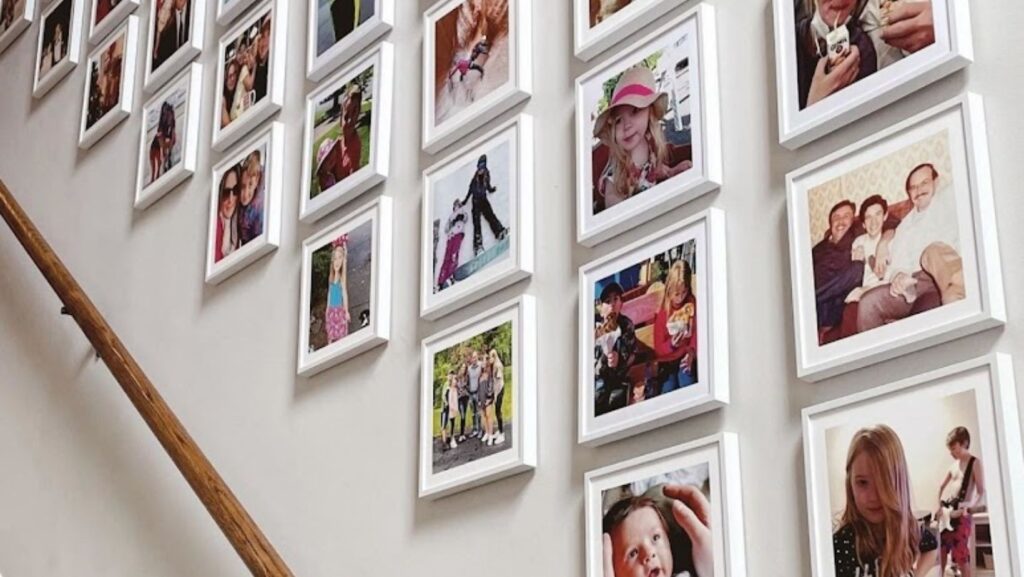Many people have experienced the disappointment of ordering canvas prints that arrive pixelated, or choosing sizes that look awkward and out of place on their walls. These common pitfalls can be frustrating, but they are also avoidable. For anyone looking to order canvas prints online, whether for the first time or as a seasoned decorator, this guide offers a clear path to getting beautiful, high-quality results that feel just right in any home.
Understanding Canvas Print Types and Finishes
Navigating the world of canvas prints can feel overwhelming, with technical terms like “gallery wrap” and “museum-quality canvas” often causing confusion. Understanding these key differences is the first step toward choosing the perfect print for a specific space and image.
Traditional Stretched Canvas vs. Canvas Boards

Canvas options are not all created equal, and knowing the difference can prevent disappointment. Traditional stretched canvas is what most people picture when they think of canvas art. The canvas material is stretched taut over a wooden frame, creating a classic, dimensional gallery look. These are ideal for statement pieces, lending a professional and substantial feel that elevates photos into true works of art.
Canvas boards, by contrast, consist of canvas material mounted onto a rigid backing. They are flatter, lighter, and generally more budget-friendly. They are well-suited for smaller spaces or for creating a gallery wall where texture is desired without the prominent depth of a stretched canvas. Many artists also like to document their collections or create companion pieces in print form, making eco-conscious options like spiral bound book printing a practical way to showcase their work alongside the finished canvases.
Matte, Satin, and Gloss Finish Comparisons
The chosen finish can completely change the look and feel of an image on the wall. A common pitfall is ordering a glossy finish for a photo that ends up reflecting too much light, making it difficult to see. Here is what experienced decorators recommend for different situations.
Matte finishes are an excellent choice for most family photos and artwork. They eliminate glare entirely, ensuring images look beautiful from any angle and in any lighting. This finish is particularly effective for black and white photos, where its non-reflective surface enhances contrast and lends a sophisticated air.
Satin finishes strike a lovely balance between matte and gloss. They have just enough sheen to make colors pop without creating distracting reflections. This makes satin a great option for vibrant landscape photos and colorful artwork where the goal is to highlight vibrancy without dealing with glare.
Gloss finishes can be stunning when used thoughtfully. They make colors incredibly rich and add a sense of depth to images. However, they also create strong reflections that can be problematic in brightly lit rooms. It is best to reserve gloss for specific pieces where a dramatic, high-impact effect is the primary goal.
Frame vs. Frameless Options
The decision to frame a canvas often comes down to personal style and the existing décor of the room. Frameless canvas prints, also known as gallery wraps, offer a clean, modern aesthetic that works beautifully in contemporary spaces. The image wraps around the edges of the frame, creating a floating effect that is especially striking for landscape photography.
Framed canvas prints provide a more traditional appeal and can help connect the artwork to other elements in the room, such as furniture or other framed pieces. Choosing a frame is a wonderful way to create visual cohesion when mixing canvas prints with other types of wall art.
Selecting and Preparing Your Images for Canvas Printing
A digital photo that looks perfect on a phone screen may not translate well when enlarged and printed on a textured surface. Many homeowners order beautiful prints only to be disappointed by the final result because the original image was not properly prepared for the canvas medium.
Resolution Requirements and Image Quality Standards
A fundamental rule for canvas printing is ensuring the image resolution is high enough. A blurry image on a computer screen will not magically become sharp when printed on canvas. For high-quality results, an image should be at least 300 DPI (dots per inch) at the desired print size. This means a 12×16 inch canvas requires an image that is at least 3600×4800 pixels.
A helpful technique is the “zoom test”: if an image still looks crisp when viewed at 100% on a computer screen, it is likely suitable for printing. Photos from modern smartphones generally work well for smaller canvas sizes, but for anything larger than 16×20 inches, images from a dedicated digital camera are recommended.
Cropping and Composition Considerations
Canvas prints make compositional issues more apparent. A slightly tilted horizon that is barely noticeable on a small screen can become a major distraction when displayed as a large piece on the wall. It is always wise to spend time straightening, cropping, and adjusting the composition before uploading an image for printing.
It is also important to consider how the canvas texture will interact with the image. Fine, intricate details can sometimes get lost in the canvas weave. Images with strong contrast and clear subjects, such as portraits, landscapes, and bold graphic designs, tend to translate better than busy shots with fine text or complex patterns.
Color Correction and Enhancement Tips
Canvas has a natural tendency to absorb light and slightly mute colors compared to glossy photo paper. To compensate for this, professional designers often recommend boosting the saturation and contrast just a bit before printing. This should be a subtle adjustment, just enough to ensure the final print is as vibrant as intended. Brightness levels may also need a slight increase, as prints in dimly lit rooms can benefit from appearing a little brighter.
Sizing Your Canvas Prints for Maximum Impact
Choosing the right size is arguably one of the most critical decisions in the process, and it is where mistakes are most frequently made. A tiny 8×10 canvas can look lost on a large wall, while a massive 30×40 print can easily overwhelm a small room.
Room-Specific Sizing Guidelines
For living rooms, many designers follow the two-thirds rule: art above a piece of furniture should be about two-thirds the width of that furniture. For example, above a 90-inch sofa, a canvas or grouping of canvases around 60 inches wide creates a pleasing visual balance.
In bedrooms, a slightly smaller and more intimate scale often works best. A 16×20 or 20×24 inch canvas hung above a queen-sized bed feels proportional and cozy. Dining rooms, where art is often viewed from a distance, can typically handle larger, more dramatic statement pieces.
Hallways present a unique challenge due to their narrow width. A series of smaller canvases often works better than one large piece. The vertical space in hallways is perfect for a gallery wall featuring multiple 8×10, 11×14, or 12×16 inch canvases.
Creating Gallery Walls with Multiple Canvas Sizes
Gallery walls featuring canvas prints require thoughtful planning because the prints have more visual weight than framed photos. A great strategy is to lay all the pieces out on the floor first, experimenting with different arrangements to find a balanced composition before hanging anything.
Mixing sizes adds visual interest, but it helps to keep them related—for example, a 16×20 inch anchor piece surrounded by 11x14s and 8x12s. Using an odd number of prints tends to create a more dynamic feel than an even number, and including at least one horizontal and one vertical piece adds variety.
Measuring and Visualizing Before You Order
A helpful trick used by professional interior designers is to create paper templates. Simply cut paper to the dimensions of the planned canvas sizes and tape them to the wall. This simple step provides an immediate visual of how the art will fit in the space, preventing costly sizing mistakes before an order is even placed.
Choosing the Right Online Canvas Printing Service
Not all canvas printing services deliver the same level of quality. Some may prioritize speed, while others might offer great prints but lack responsive customer service. The goal is to find a service that provides a good balance of quality, service, and value.
Quality Indicators to Look For
Reputable companies often provide detailed information about their canvas materials, inks, and printing processes. It is wise to check if a company uses genuine artist-grade canvas and archival inks, as these details are crucial for the longevity and color accuracy of the prints.
Customer reviews are invaluable, but it is important to read them carefully. Look for reviews that mention specific details about print quality, color accuracy, and durability over time. Photos shared by other customers are especially helpful for assessing real-world results.
Pricing Models and Hidden Costs
Shoppers should be wary of companies that advertise low base prices only to add expensive shipping, handling fees, or charges for basic features like protective packaging. It is always a good practice to calculate the total cost, including all fees and shipping, before making a final decision.
Frequent sales that seem too good to be true often are. Extremely low prices can be a sign of compromised quality, such as thinner canvas, lower-grade inks, or a rushed production process that leads to poor color matching.
Customer Service and Return Policies
A generous return policy often indicates a company’s confidence in its product. Look for companies that offer a satisfaction guarantee and will reprint or refund an order if the quality does not meet expectations.
Before placing a large order, it can be helpful to test a company’s customer service by asking a question about their materials or process. A prompt and helpful response is a good indicator of the support one can expect if an issue arises later.
Modern Canvas Solutions: Why Mixtiles Are Changing the Game
While traditional canvas prints hold a timeless appeal, modern solutions like Mixtiles are addressing many of the common frustrations associated with the conventional ordering and hanging process. The traditional method—measuring, ordering, waiting, and finally hanging with nails and tools—can feel intimidating and permanent.
Peel-and-Stick Convenience Without Commitment

The appeal of Mixtiles lies in how they eliminate the commitment anxiety of traditional canvas prints. The innovative peel-and-stick backing allows for endless experimentation. Pieces can be moved and rearranged without leaving holes in the walls, removing the pressure to find the “perfect” spot on the first try.
This flexibility is especially valuable for renters or anyone who enjoys refreshing their décor seasonally. Creating holiday displays or simply swapping out photos for a fresh look becomes an easy and enjoyable activity, rather than a major project involving spackling and touch-up paint.
Perfect Sizing for Rental-Friendly Decorating
The standard Mixtiles sizing works perfectly for creating cohesive gallery walls without the sizing anxiety that can come with traditional canvas. There is no need to worry about whether an 18×24 will look strange next to a 12×16, as everything is designed to coordinate naturally.
For renters in particular, this consistency is a huge benefit. It allows for the creation of a sophisticated, professional-looking gallery wall without the permanent commitment of traditional prints. When it is time to move, the entire display can be taken down without causing any damage to the walls.
Cost-Effective Way to Display Multiple Images
Traditional canvas prints can become expensive quickly, especially when creating a gallery wall. A single 16×20 canvas can cost a significant amount, making a display of six to eight pieces a major investment. Mixtiles make it affordable to showcase many images at once, which is perfect for displaying family photos, travel memories, or a curated art collection.
Entire gallery walls can be created with Mixtiles for a fraction of the cost of just one or two traditional canvas prints. The ability to easily swap out images also means getting more value and enjoyment from a photo collection over time.
Installation and Display Strategies for Canvas Prints
Even the most beautiful canvas print can look amateurish if it is not hung with care. Poor installation can detract from gorgeous art, but with a little planning and the right approach, anyone can achieve a professional-looking display.
Wall Preparation and Hanging Hardware
Before hanging anything, it is important to prepare the wall. For larger canvas prints—anything over 16×20 inches—it is best to locate a wall stud for at least one of the hangers to ensure security. For smaller pieces, high-quality drywall anchors are sufficient, but it is never a good idea to skimp on hardware.
Cleaning the wall surface before hanging is also a good step. Dust and grime can interfere with adhesive strips and make any installation less secure. A clean surface is essential for both adhesive and traditional hanging methods.
The long-term environment should also be considered. The humidity and temperature fluctuations in bathrooms and kitchens can damage canvas over time. It is best to avoid hanging canvas prints in these areas unless they have been specifically treated for high-moisture environments.
Creating Cohesive Arrangements
The key to a professional-looking arrangement is planning. Using the paper template method—taping paper cutouts to the wall—is an excellent way to test arrangements before making any permanent marks.
For a single large piece, the general rule is to hang it at eye level, which is typically 57-60 inches from the floor to the center of the canvas. This can be adjusted based on ceiling height and furniture placement. In rooms with high ceilings, hanging art slightly higher helps maintain proportion.
For gallery walls, a good approach is to start with the largest piece and build the arrangement around it. Maintaining consistent spacing between pieces, usually 2-3 inches, creates a clean, cohesive look that feels intentional rather than cluttered.
Lighting Considerations for Canvas Displays
Lighting is a crucial element that is often overlooked but can make or break a canvas display. Natural light is generally flattering, but direct sunlight can cause prints to fade over time. It is best to position canvas prints where they will receive good ambient light without being exposed to harsh, direct sun.
For artificial lighting, avoid placing canvas prints directly under strong overhead lights, which can create glare and wash out colors. Track lighting or wall-mounted picture lights aimed to graze the canvas surface can beautifully highlight the texture and add depth.
The color temperature of the light bulbs also matters. Warm-toned light enhances the richness of earth tones and skin tones in portraits, while cooler light is often better for landscapes and architectural photography. Using different bulbs in different rooms can help complement the specific art displayed there.
Maximizing Your Canvas Print Investment
Canvas prints are an investment in a home’s atmosphere and cherished memories, so it is worthwhile to take steps to protect them and ensure they can be enjoyed for years to come.
Keep canvas prints away from direct sunlight, extreme temperatures, and high-humidity areas. Even high-quality prints can fade or warp under harsh conditions, so proper placement is key to extending their life.
Regular dusting with a soft, dry cloth will keep canvas prints looking fresh. It is important to avoid using water or cleaning products, as they can damage the canvas texture and inks. For stubborn dust, a very lightly dampened cloth can be used with extreme care, but it should be tested on an inconspicuous corner first.
Consider rotating the display from time to time. Keeping some favorite prints safely stored and swapping them out seasonally or for a fresh look not only keeps the décor feeling current but also helps preserve all the prints over the long term.
Finally, documenting successful arrangements with photos is a great idea. After creating a beloved gallery wall, it can be hard to remember the exact placement later on. Having photos provides a reference for recreating favorite looks or inspiration for new spaces.
The beauty of canvas prints lies in their ability to help turn a house into a home by displaying the images and memories that matter most. Whether choosing traditional stretched canvas, modern peel-and-stick solutions, or a combination of both, the key is to select quality materials, prepare images properly, and hang them with care. With the right approach, canvas prints will bring joy and personality to any wall for years to come.


More Stories
Can Gasteromaradical Disease Be Cured? Discover the Latest Insights
Movezwap.org 2022: An Overview
The Growing Appeal of Retirement Homes for Today’s Seniors